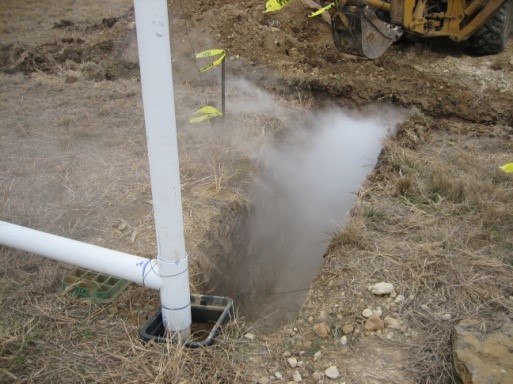Why did the customer contact us?
Ensolum, LLC personnel provided environmental consulting services in association with a release of gasoline from a manifold at a refined petroleum products terminal. The scope included subsurface investigation, risk-based assessment and remediation utilizing the Texas Risk Reduction Program (TRRP) as regulatory guidance.
Solutions provided:
The project site is an operating refined petroleum products terminal located in Fort Worth, Texas. During the completion of due diligence activities related to a real estate transaction at an adjacent property, petroleum hydrocarbons were identified in soil and groundwater. This resulted from a release from the pipeline manifold at the terminal.
Ensolum personnel further investigated the magnitude and extent of petroleum hydrocarbons in the on-site soil and groundwater. Ensolum also conducted response actions to mitigate on-site contamination and its off-site migration. The completion of investigation and groundwater resource classification included a Class 3 GW resource designation and a Remedy Standard B closure. Subsequently, Ensolum utilized a Plume Management Zone for the on-site affected area. Furthermore, Ensolum utilized a Remedy Standard A closure for the off-site affected area. To reduce the concentrations of chemicals of concern (COCs) in the off-site soil and groundwater to below the TRRP Tier 1 Critical Protective Concentration Levels, Ensolum utilized in-situ chemical oxidation as the appropriate response action.
Due to the unique characteristics of the fractured, low-hydraulic conductivity, Ensolum delivered limestone formation. Ensolum delivered the selected reagent to the affected soil and groundwater utilizing gravity feed infiltration trenches. Our team prepared the formation for contaminant oxidation. Ensolum inoculated the treatment area through the infiltration trenches with an alkaline oxidative de-ionizing solution, sodium percarbonate and sodium persulfate. This served as a wetting agent, de-ionizing clay platelets and optimizing aqueous reagent contact with contaminants. The pre-oxidation alkaline de-ionizing solution also serves as a persulfate catalyst (producing sulfate radicals).
Twelve to twenty-four hours after installing the initial oxidant blend, Ensolum subsequently inoculated the treatment area. Ensolum utilized VeruSolve-HP™ aqueous reagent as a Surfactant-Enhanced In-Situ Chemical Oxidation (S-ISCO™) Coelution Technology™. VeruSOLVE-HP™ is a stabilized surfactant-cosolvent/oxidant combination. This is effective for surgical destruction of source term contaminants. The stabilized surfactant-cosolvent/oxidant blend achieves Winsor Type I solubilization, where the contaminant is solubilized as a single-phase micro-emulsion and dissolution of constituents occur without mobilization. This allows for the destruction of the contaminants that are currently in a non-aqueous phase (i.e. the source term). The resulting redox reaction will occur over a very long period of time. Therefore, reaction kinetics are controlled, sustaining a highly oxidative environment for weeks. Extended persistence greatly increases the contaminant-oxidant contact occurrence, thereby producing very favorable results.
The initial treatment event reduced the concentration of benzene from 2.7 mg/L to 0.051 mg/L and MTBE from 120 mg/L to 2.5 mg/L in the off-site groundwater. A follow-up treatment event further reduced the concentrations to 0.006 mg/L, which was below the TRRP Tier 1 Critical PCL for a Class 3 groundwater-bearing unit.
Visit our Past Projects Page to learn more about Ensolum’s previous projects.

Petroleum Products Terminal Environmental Consulting Services

